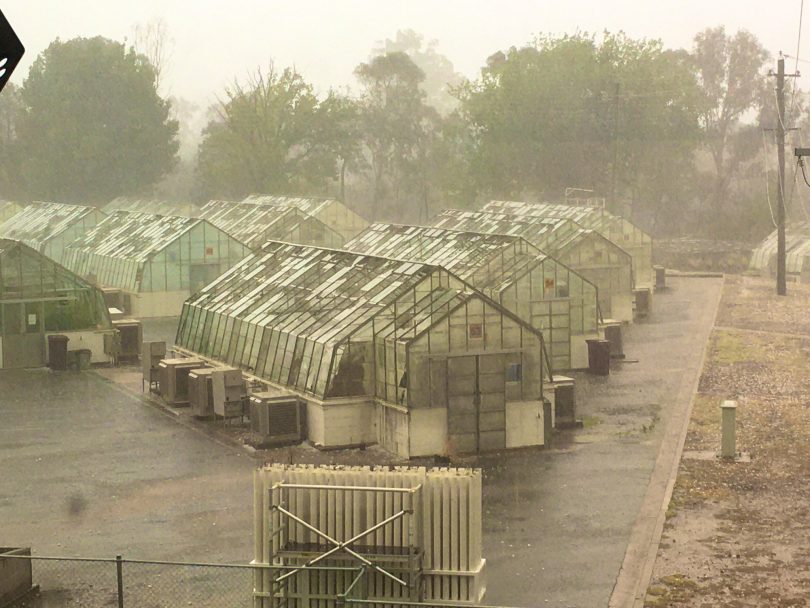
Hailstorms in 2020 destroyed much of CSIRO’s Black Mountain glasshouses. Photo: Kitty Sparks.
CSIRO staff have taken their cause to Parliament House this week, calling on the Federal Government to commit to long-term funding for the nation’s peak science agency in order to secure jobs.
The national science agency lost more than 800 jobs in the past 18 months, with more slated to go in a “reshaping” of the organisation.
In September, CSIRO management staged a four-day workshop aimed at deciding the future direction of the organisation’s portfolios and staffing levels.
But it rejected suggestions from the workforce that the meetings were designed to pit sections of the agency against each other in a fight for survival.
With such uncertainty over their futures remaining, the CSIRO Staff Association section of the Community and Public Sector Union (CPSU) has gone straight to the top to ask for help.
It is calling on the Federal Government to step in to stop the cuts and fund CSIRO to be able to continue its world-leading science and research.
The section’s secretary Susan Tonks said CSIRO’s staff cuts came at a time when Australia’s investment in publicly funded science was already at historically low levels.
She pointed to recent research conducted by the Parliamentary Library showing funding of the CSIRO as a percentage of GDP is falling.
“We are at Parliament House this week making the case for the future of the CSIRO directly to decision makers,” she said.
“This is about ensuring they understand what’s at stake for their communities and for the nation if the future of publicly funded science is not protected and invested in.
“And we are calling on the Minister and the government to step in to stop the cuts and fund CSIRO to be able to continue its world-leading science and research.
“The CSIRO is the backbone of Australia’s scientific capability, and these cuts threaten important research, from climate resilience and health research through to food security.
“Our message to the government this week is that we need leadership that values science, not a government that sees it as a cost to be cut.”
Meanwhile, CSIRO has revealed it will cost $37.9 million to replace its Black Mountain greenhouse laboratories that were severely damaged in the 2020 hailstorms that hit Canberra.
That’s excluding GST, and would be partly covered by a $6.7 million indemnity settlement.
Three options had been considered, but CSIRO is seeking parliamentary approval for its costly preference.
In a submission to Parliament’s joint public works standing committee, CSIRO said its preferred option for redeveloping the site would cost that much, but would have an “accelerated delivery timeframe”.
“[That] enables the prioritised delivery of critical greenhouses to meet the immediate research need, while allowing future stages to be refined and submitted for separate approvals based on long-term strategic vision,” the submission said.
The hailstorm wrecked about 5000 square metres of greenhouses.
CSIRO lost almost 80 per cent per cent of the site’s greenhouse capability, vital to its nationally and internationally significant scientific, agricultural and biosecurity research.
The committee has called CSIRO executives and the project’s consultants to a public hearing on the matter.
Original Article published by Chris Johnson on Region Canberra.









